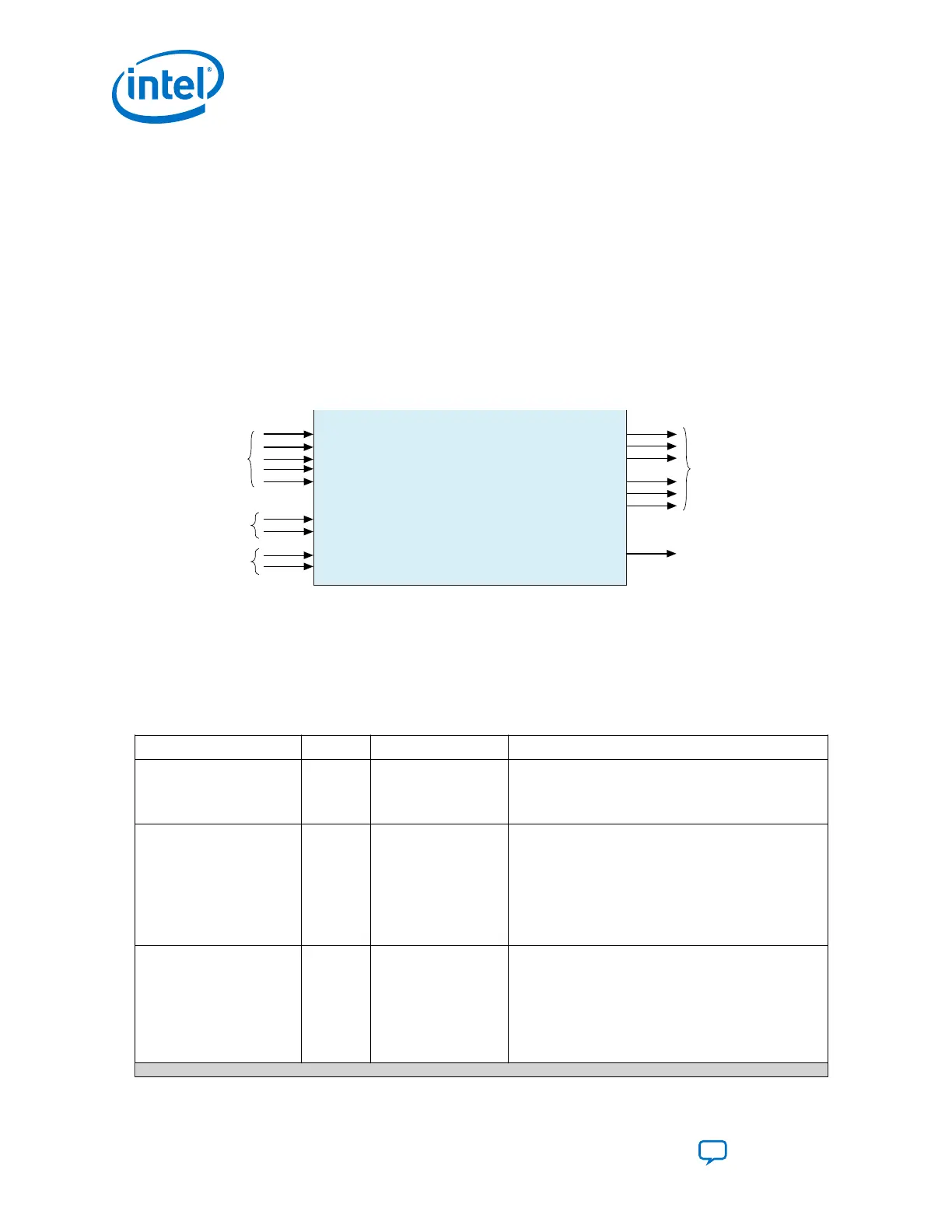4.4.3. Transceiver PHY Reset Controller Interfaces
This section describes the top-level signals for the Transceiver PHY Reset Controller IP
core.
The following figure illustrates the top-level signals of the Transceiver PHY Reset
Controller IP core. Many of the signals in the figure become buses if you choose
separate reset controls. The variables in the figure represent the following
parameters:
• <n>—The number of lanes
• <p>—The number of PLLs
Figure 162. Transceiver PHY Reset Controller IP Core Top-Level Signals
Generating the IP core creates signals and ports based on your parameter settings.
pll_locked[<p>–1:0]
pll_select[<p*n>–1:0] (1)
tx_cal_busy[<n>–1:0]
rx_cal_busy[<n>–1:0]
rx_is_lockedtodata[<n>–1:0]
tx_manual[<n>–1:0]
rx_manual[<n>–1:0]
clock
reset
Transceiver PHY Reset Controller Top-Level Signals
tx_digitalreset[<n>–1:0]
tx_analogreset[<n>–1:0]
tx_ready[<n>–1:0]
rx_digitalreset[<n>–1:0]
rx_analogreset[<n>–1:0]
rx_ready[<n>–1:0]
pll_powerdown[<p>–1:0]
PLL and
Calibration
Status
PLL Powerdown
TX and RX
Resets and Status
Clock
and Reset
PLL
Control
Note:
(1) n=1 for pll_select signal width when a single TX reset sequence is used for all channels.
Note: PLL control is available when you enable the Expose Port parameter.
Table 160. Top-Level Signals
This table describes the signals in the above figure in the order that they are shown in the figure.
Signal Name
Direction Clock Domain Description
pll_locked[<p>-1:0]
Input Asynchronous Provides the PLL locked status input from each PLL.
When asserted, indicates that the TX PLL is locked.
When deasserted, the PLL is not locked. There is one
signal per PLL.
pll_select[<p*n>-1:0]
Input Synchronous to the
Transceiver PHY Reset
Controller input clock.
Set to zero when not
using multiple PLLs.
When you select Use separate TX reset per
channel, this bus provides enough inputs to specify an
index for each pll_locked signal to listen to for each
channel. When Use separate TX reset per channel
is disabled, the pll_select signal is used for all
channels.
n=1 when a single TX reset sequence is used for all
channels.
tx_cal_busy[<n> -1:0]
Input Asynchronous This is the calibration status signal that results from
the logical OR of pll_cal_busy and tx_cal_busy
signals. The signal goes high when either the TX PLL or
Transceiver PHY initial calibration is active. It will not
be asserted if you manually re-trigger the calibration
IP. The signal goes low when calibration is completed.
This signal gates the TX reset sequence. The width of
this signals depends on the number of TX channels.
continued...
4. Resetting Transceiver Channels
UG-20070 | 2018.09.24
Intel
®
Cyclone
®
10 GX Transceiver PHY User Guide
Send Feedback
264

